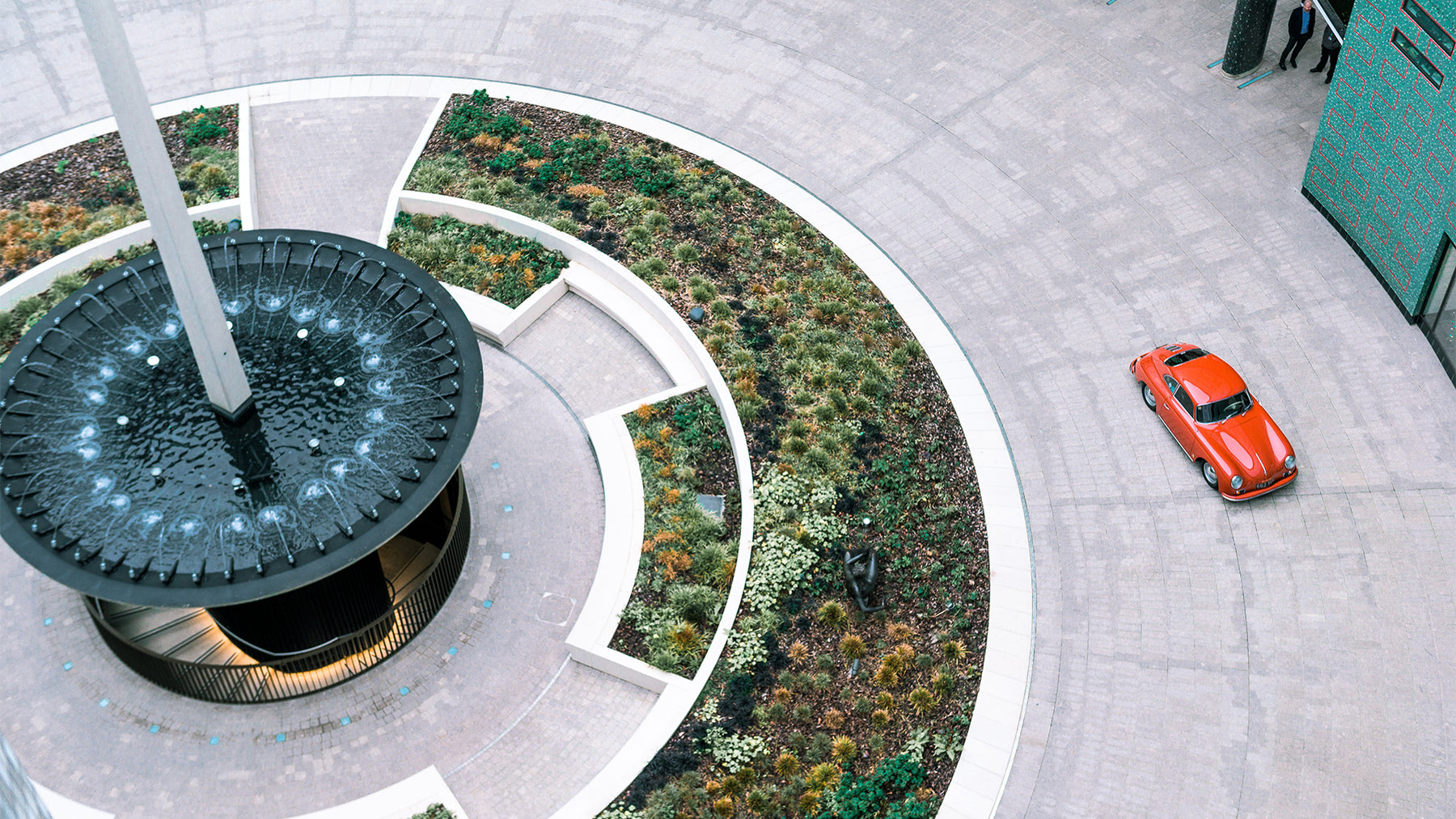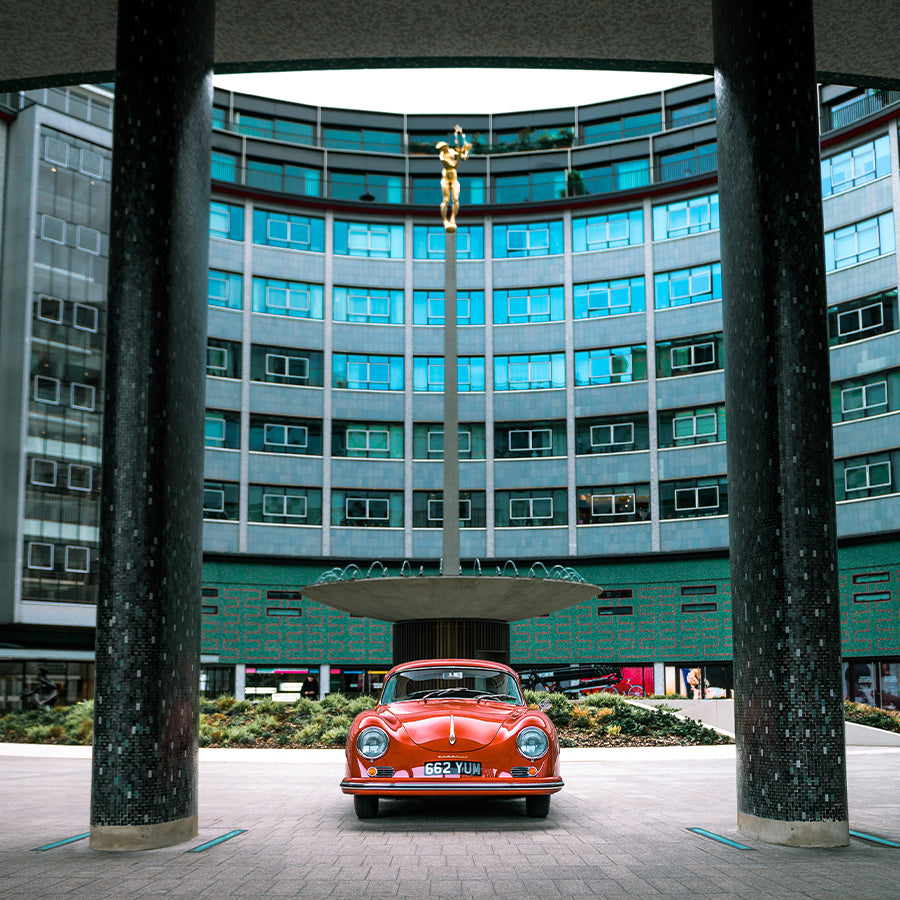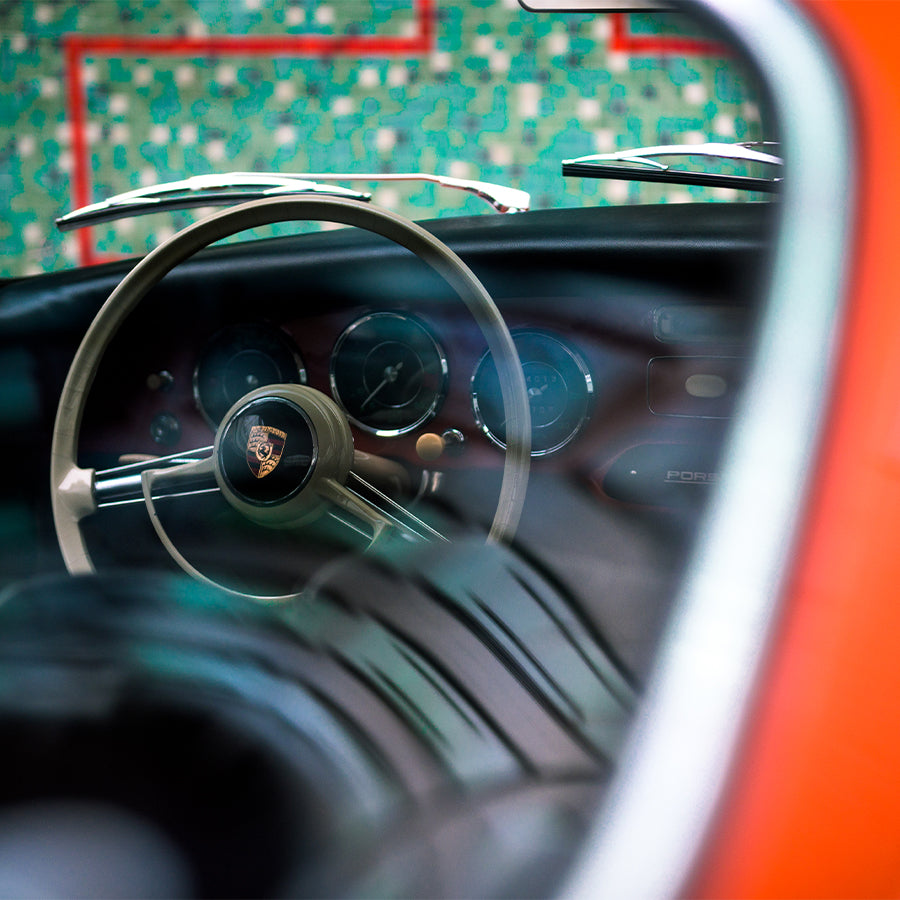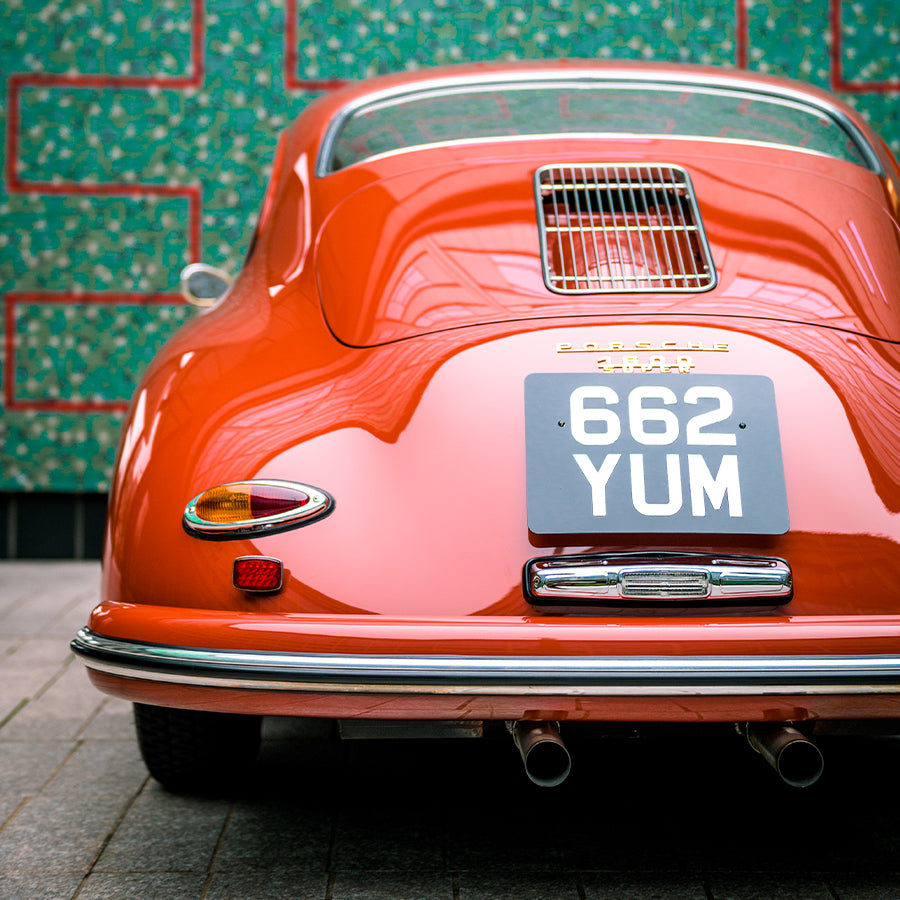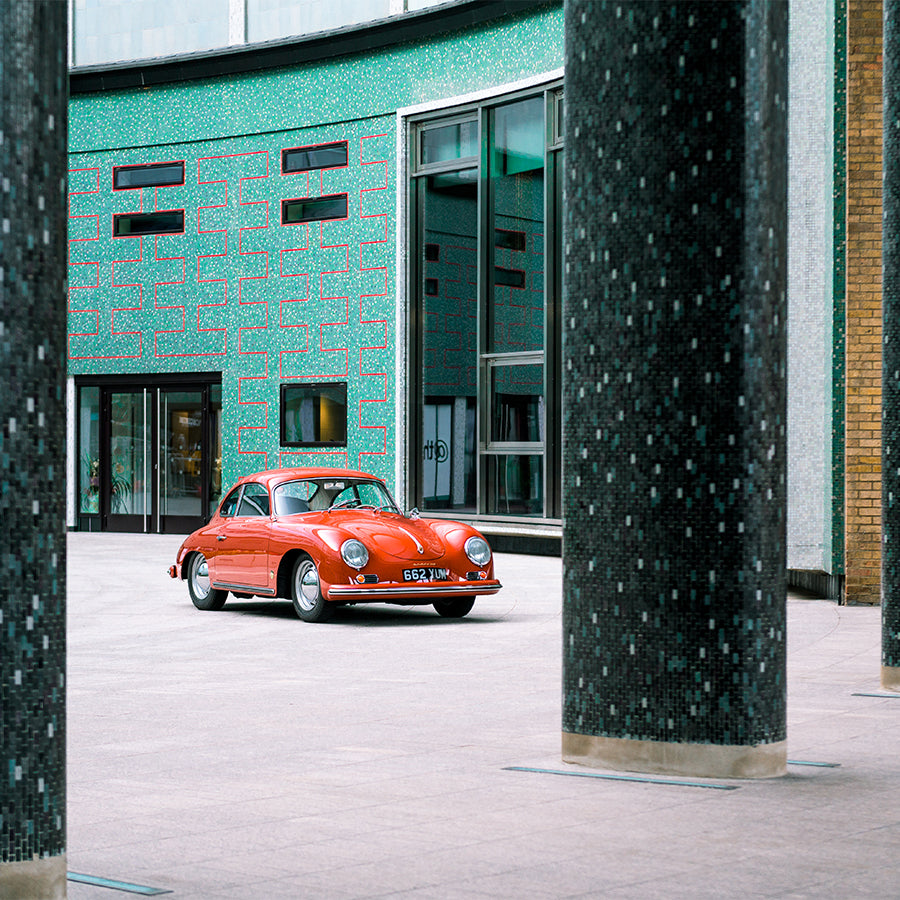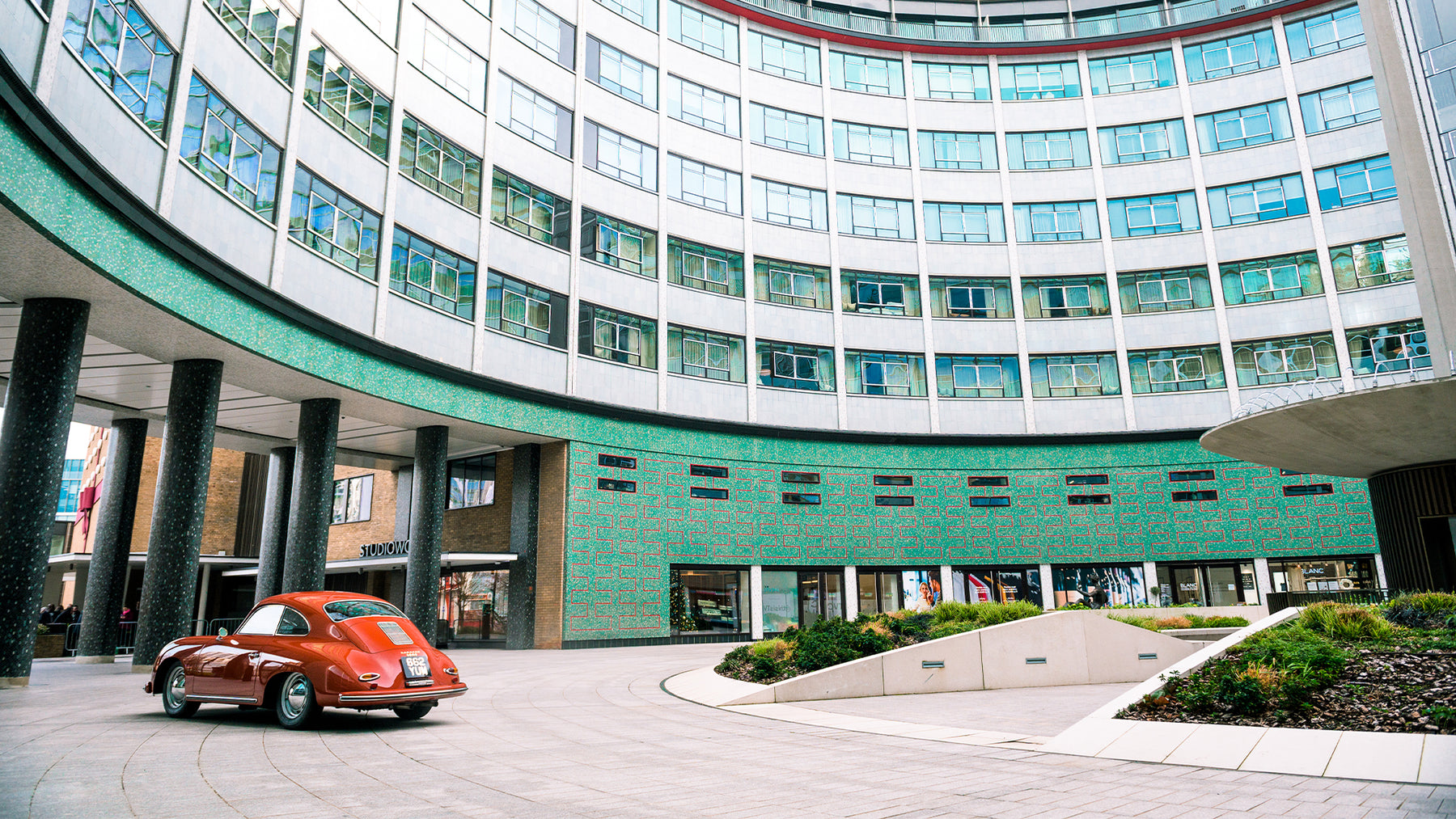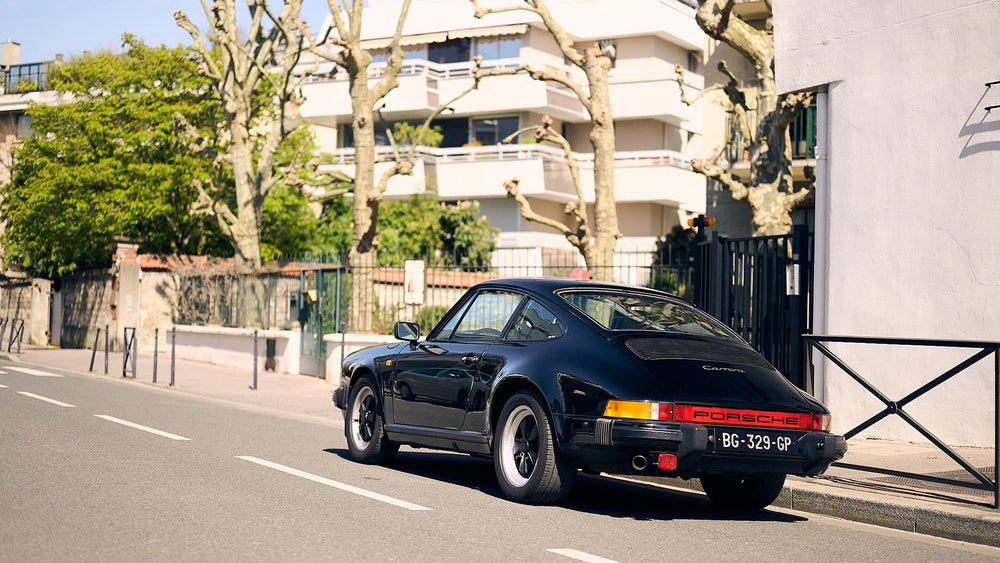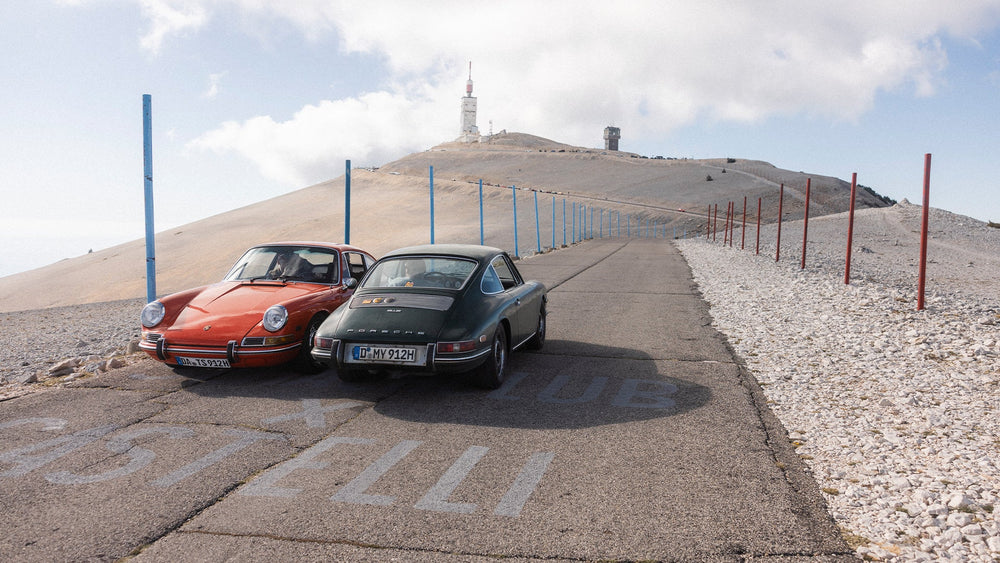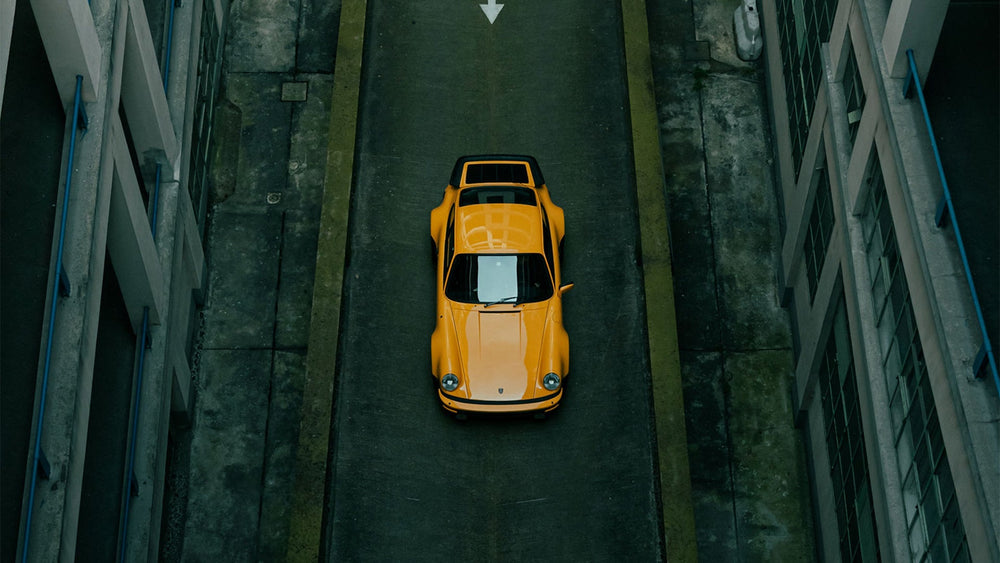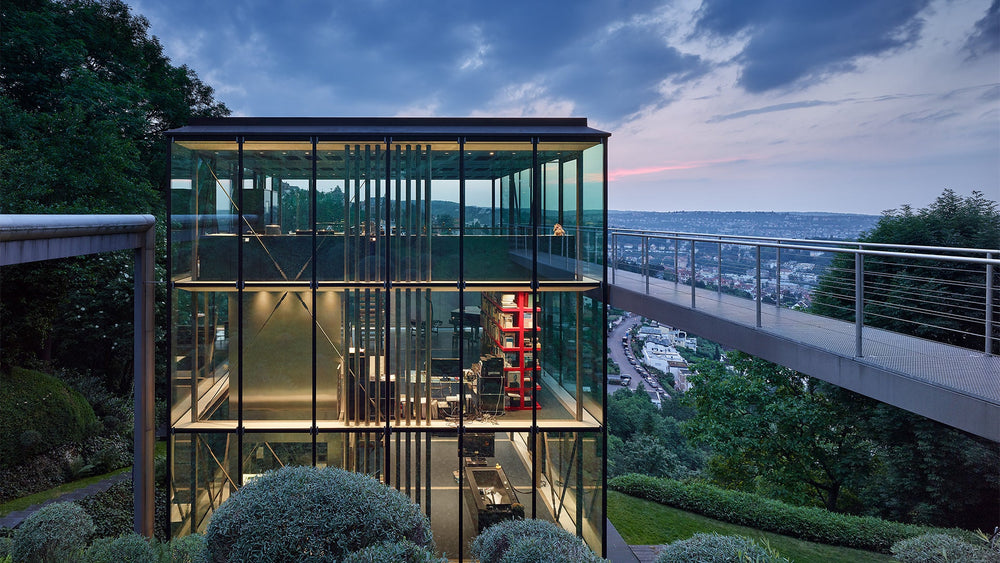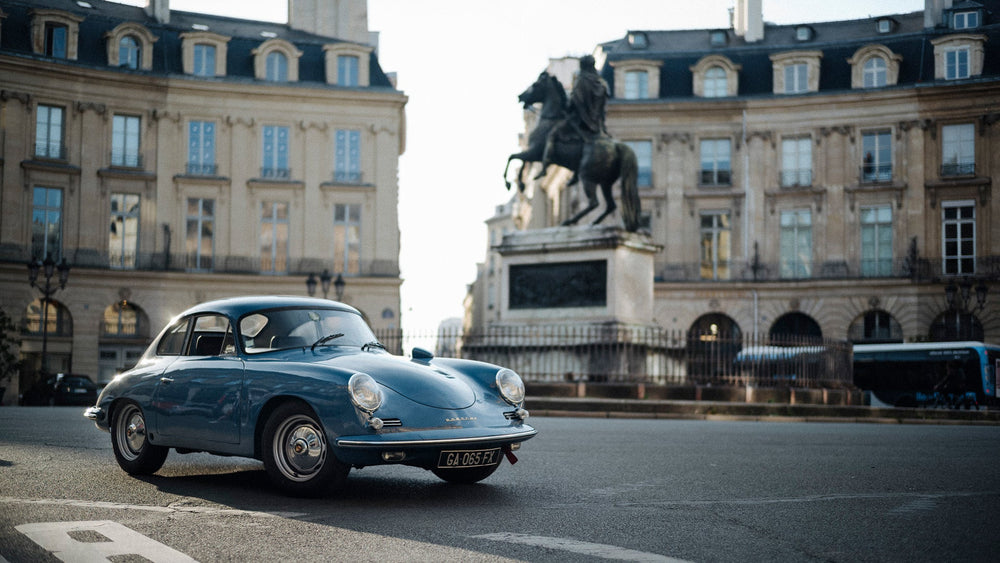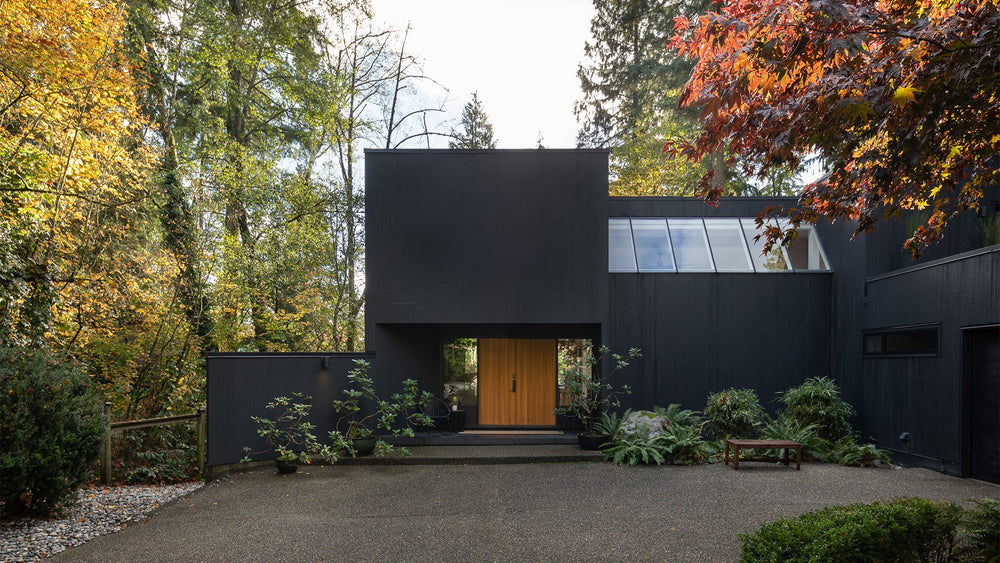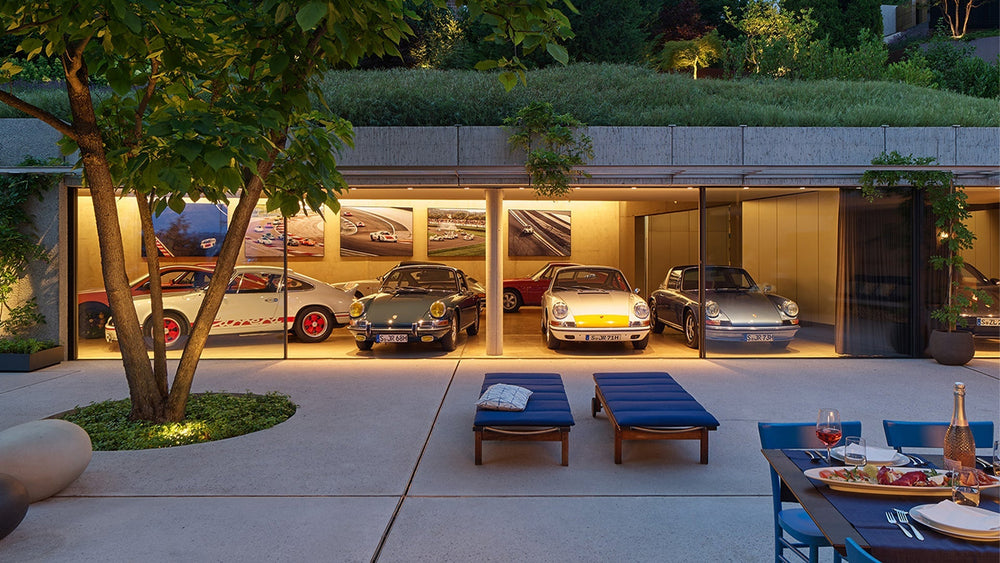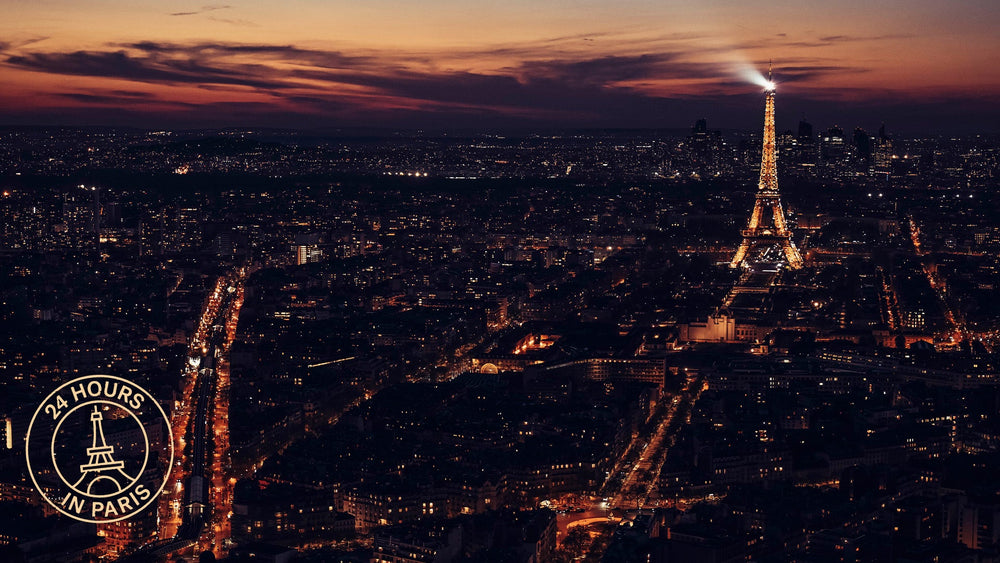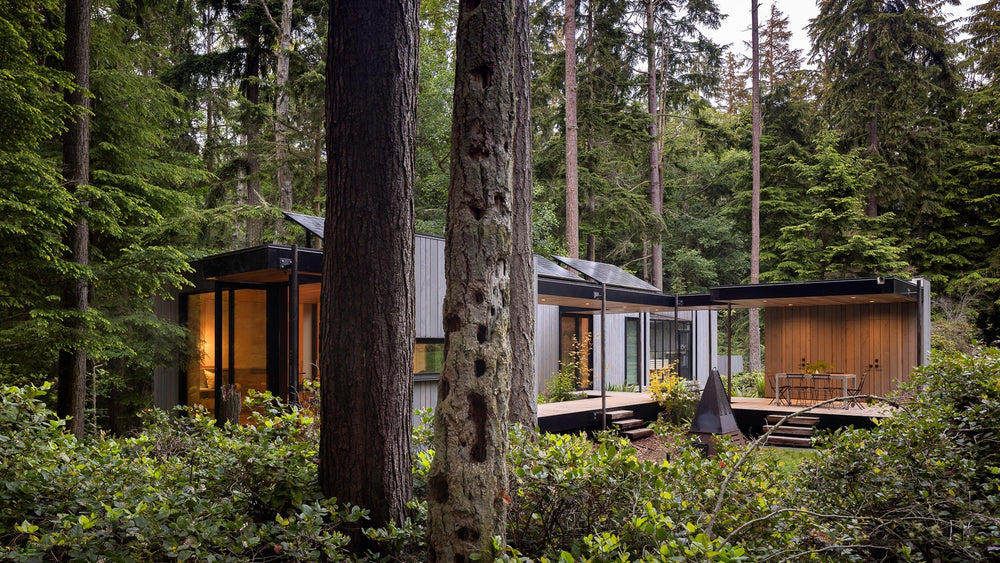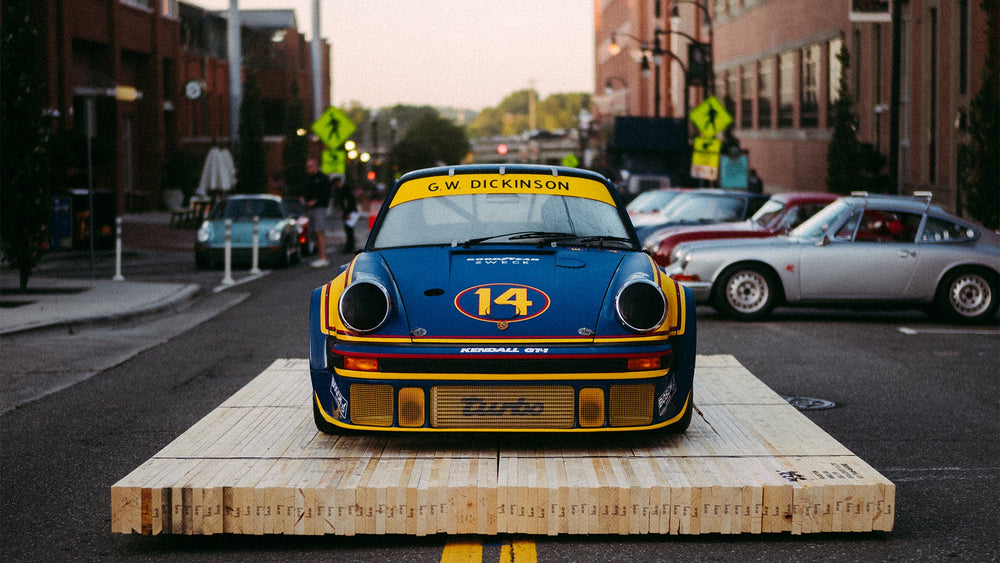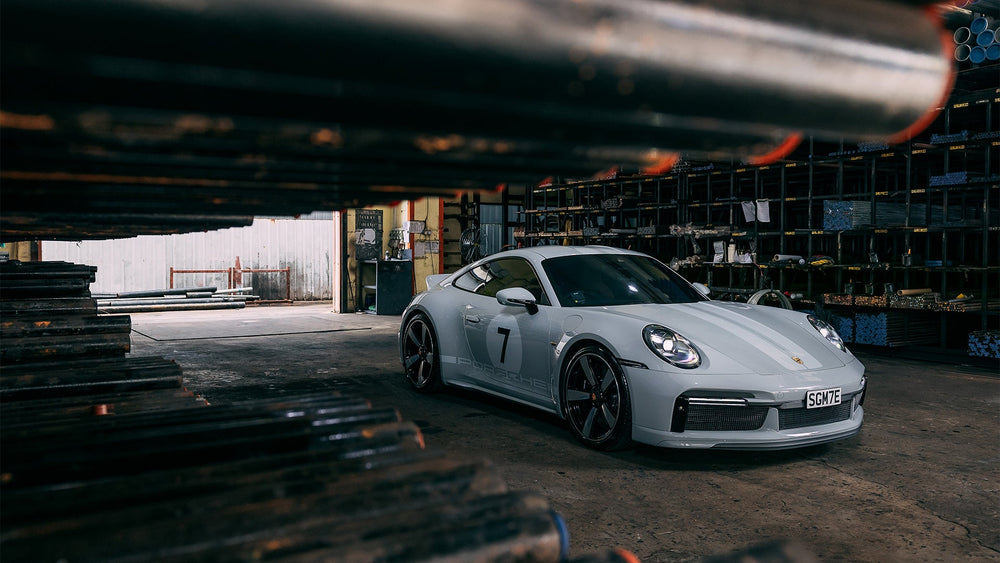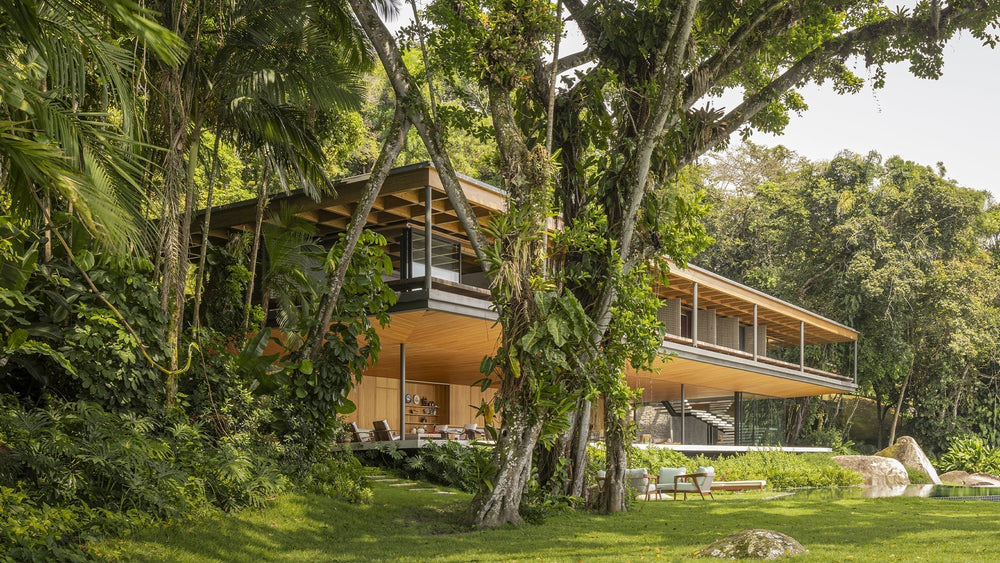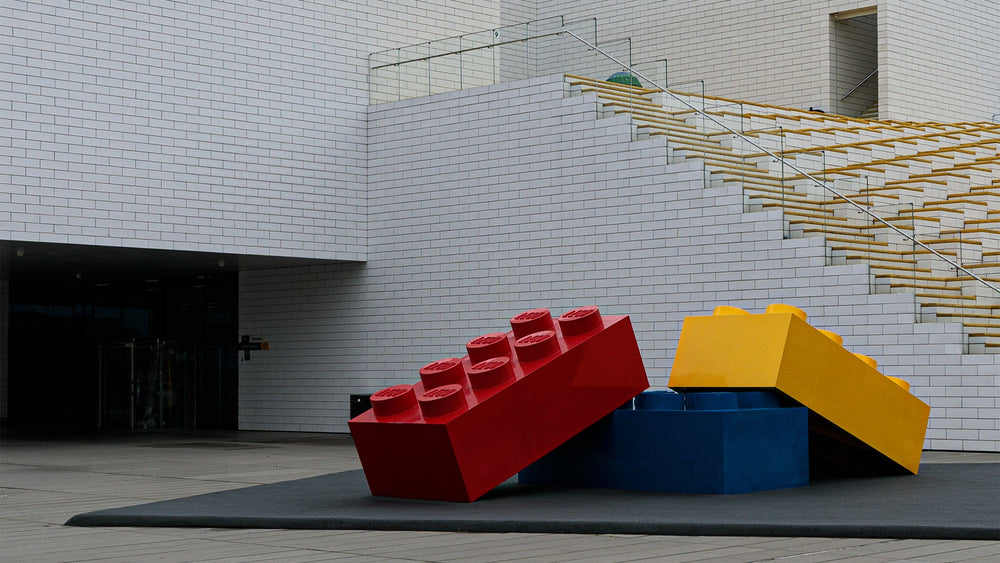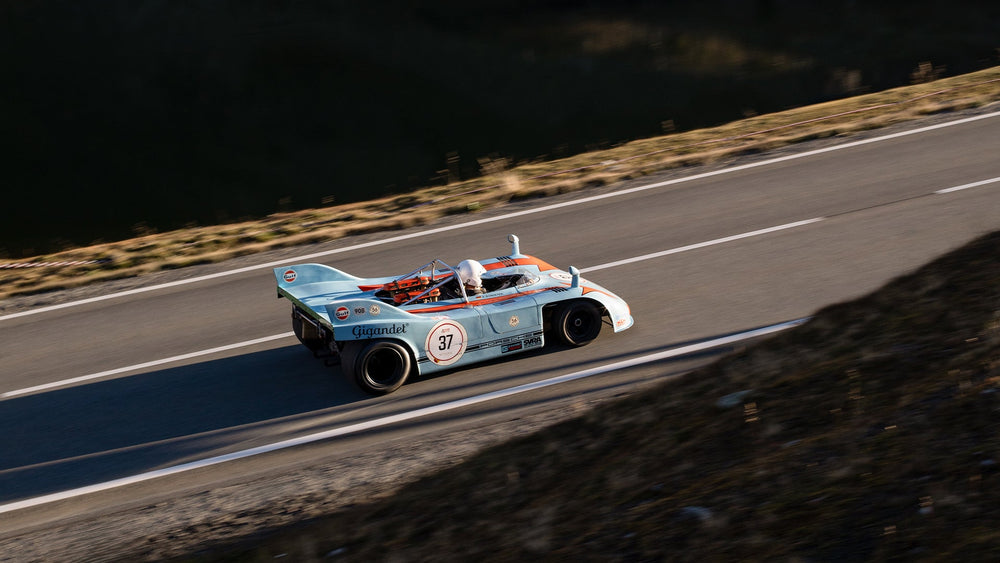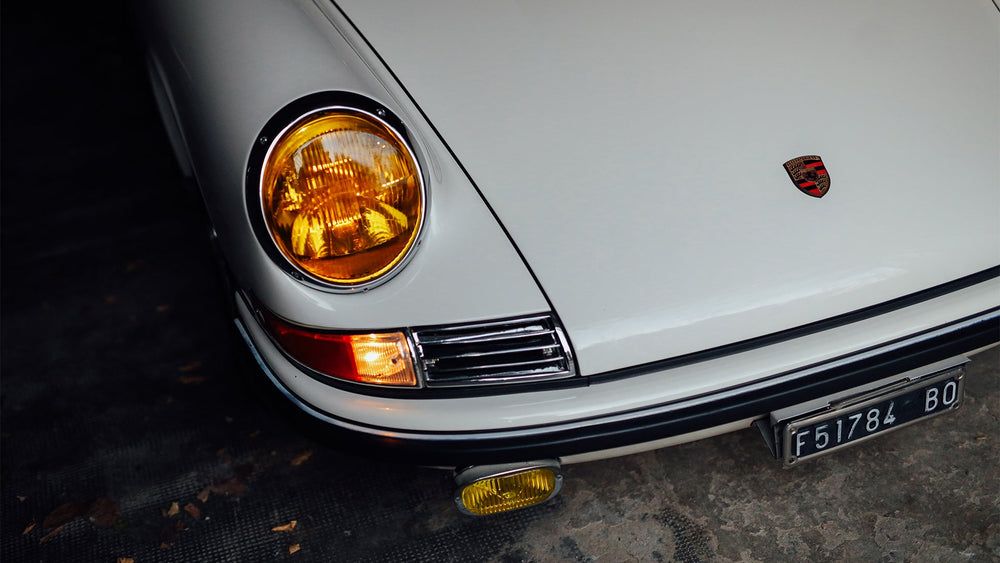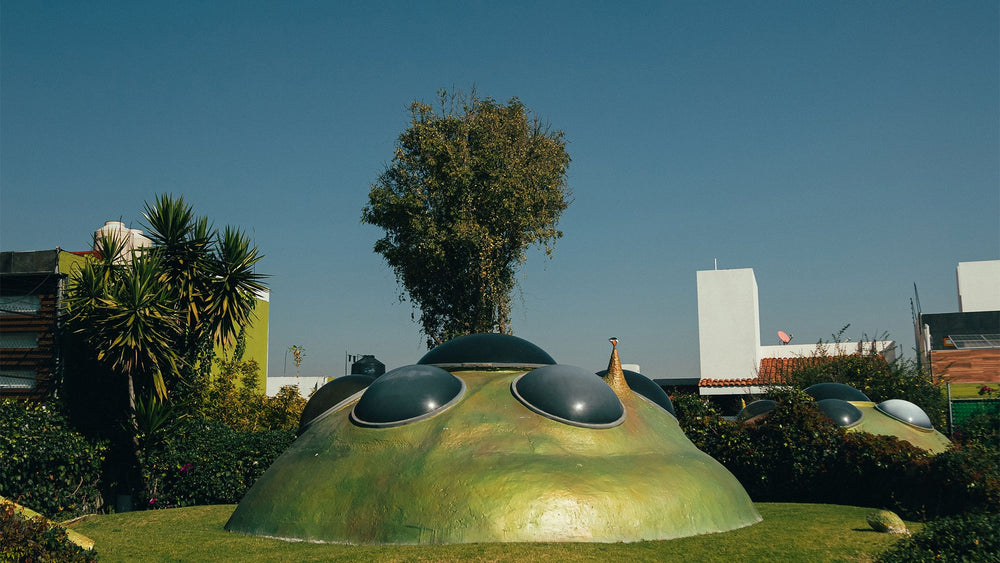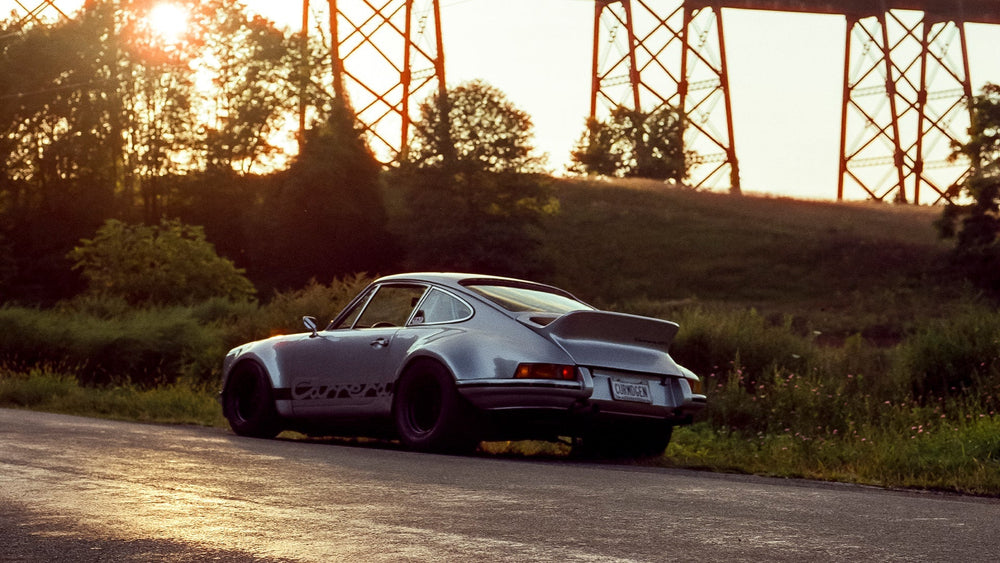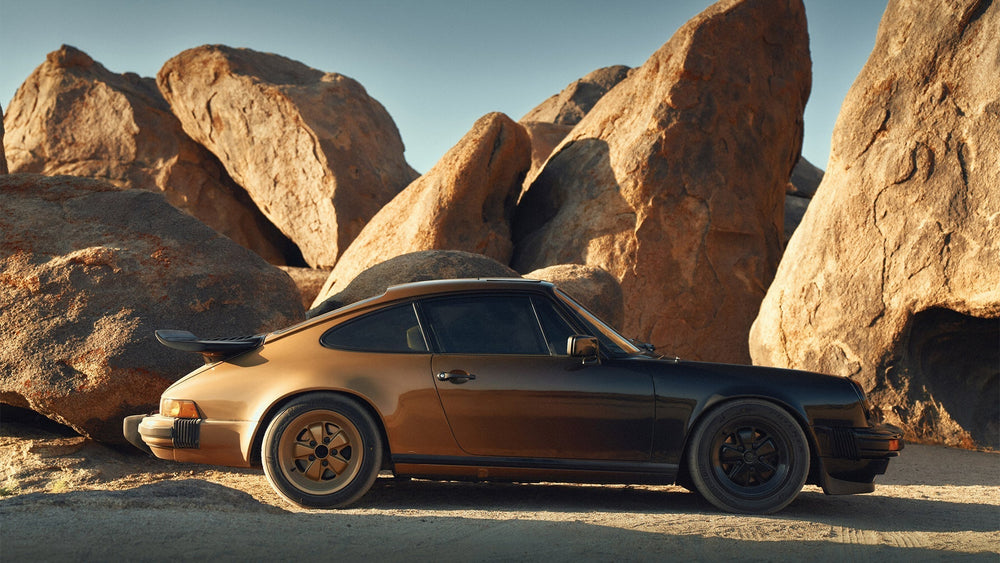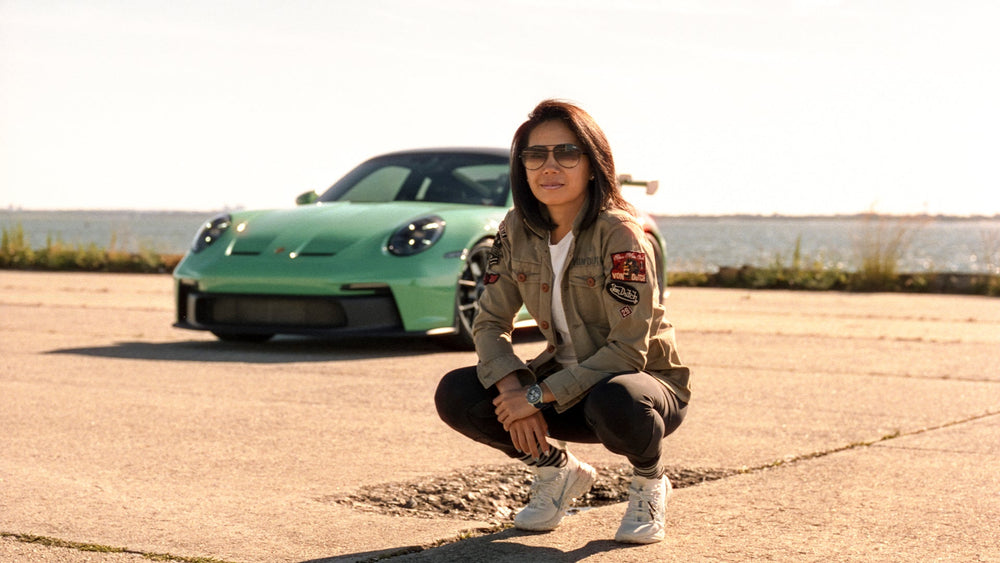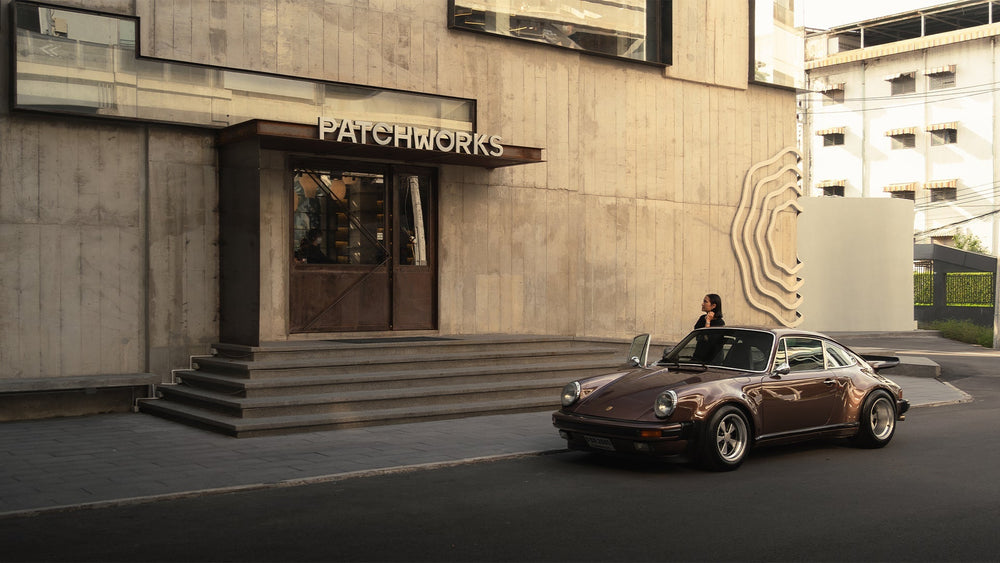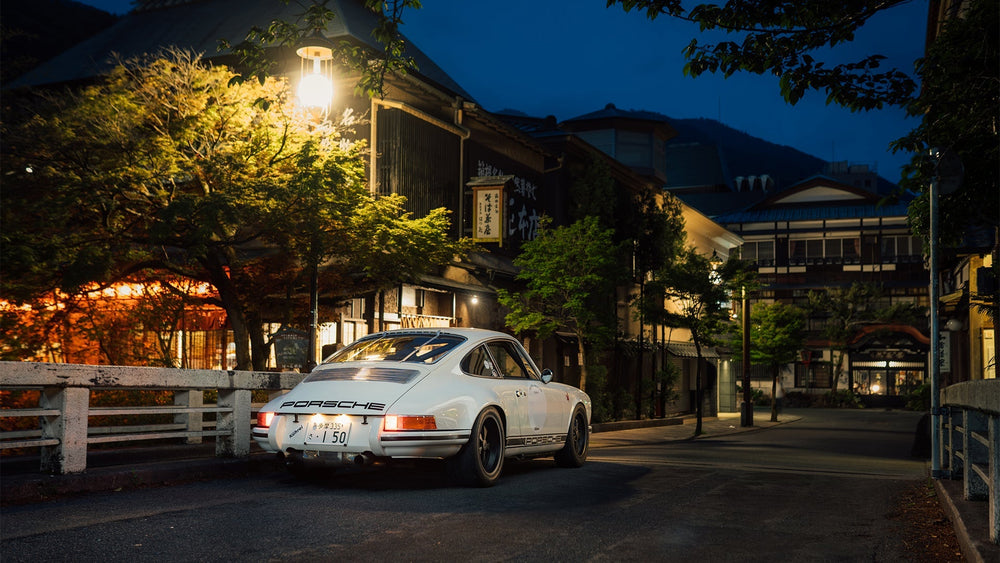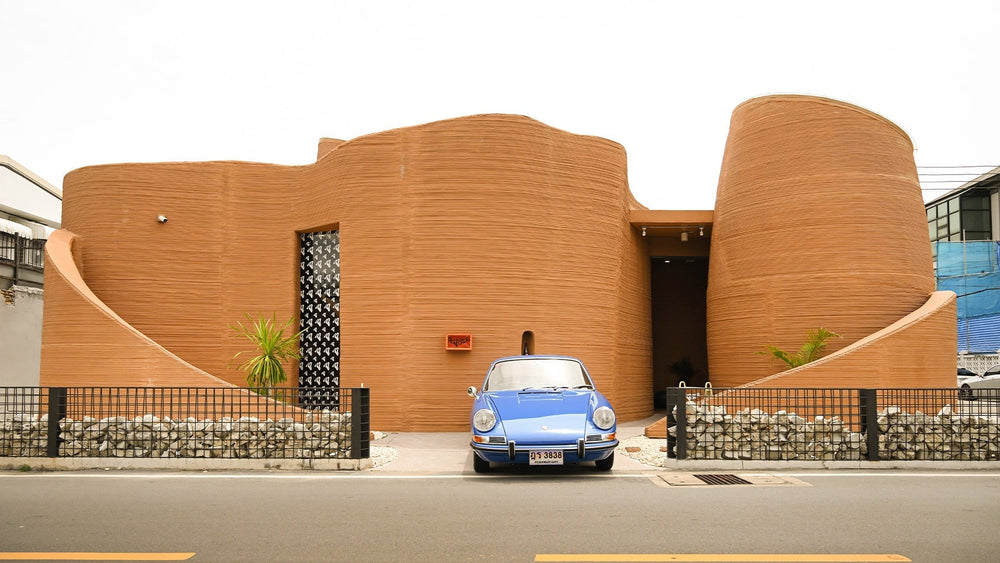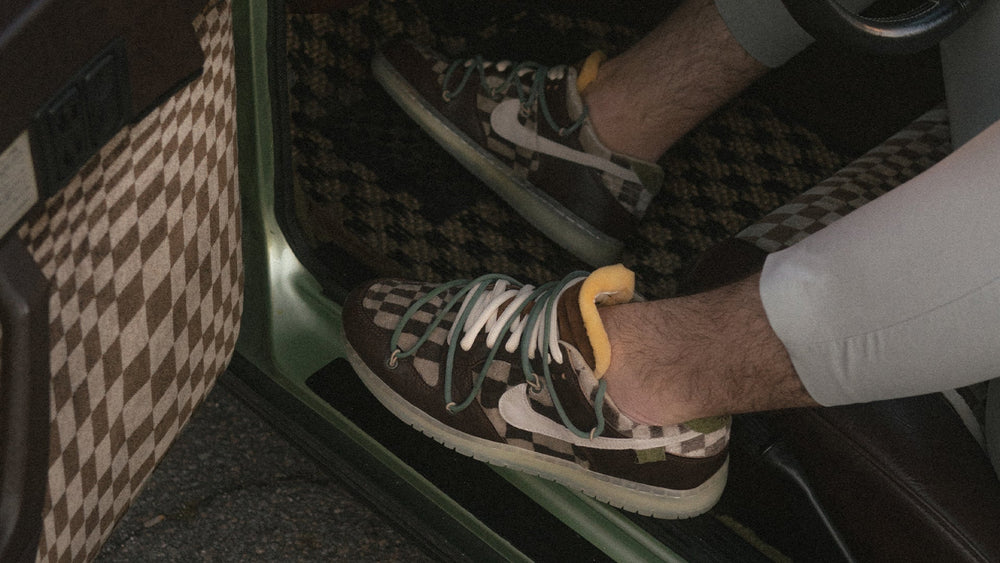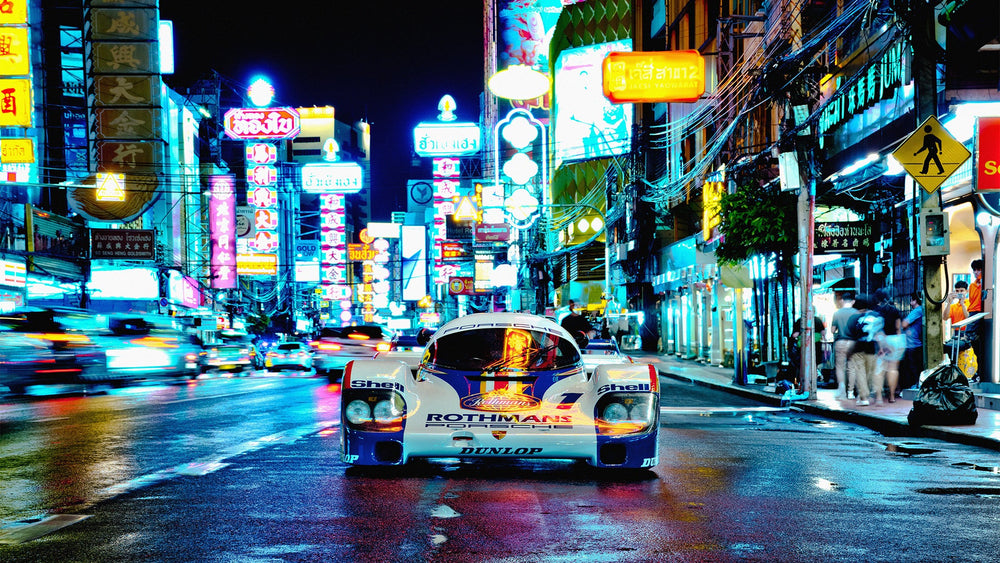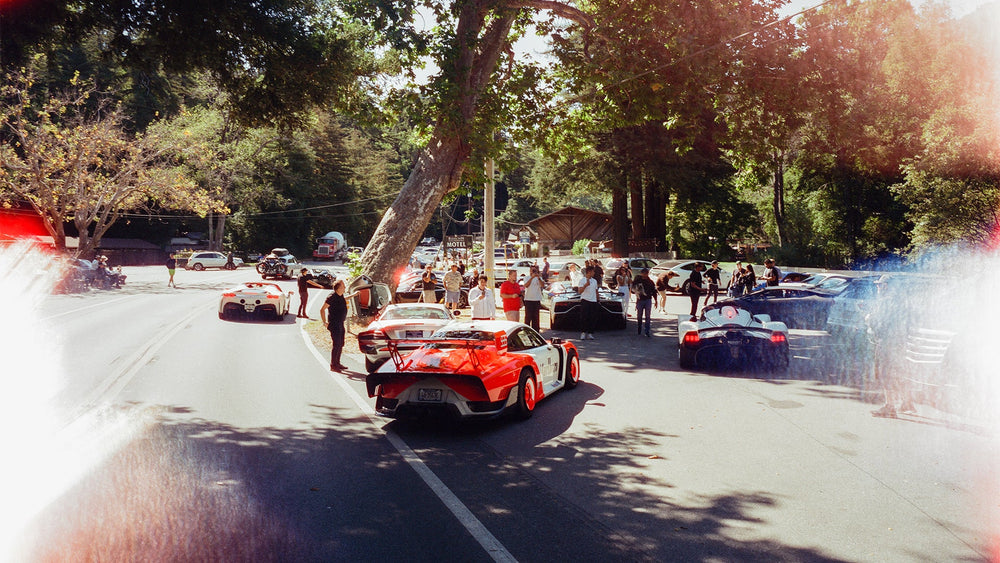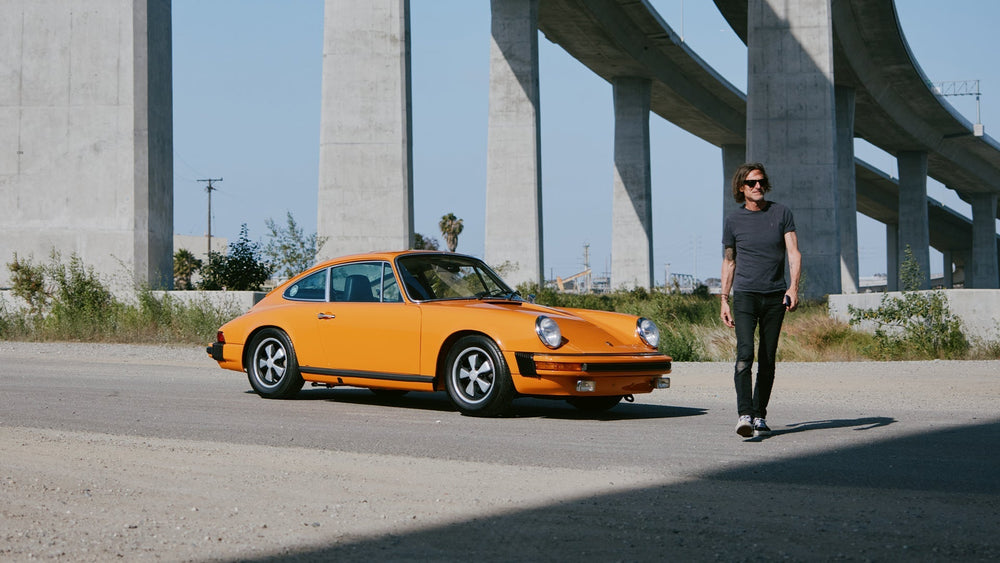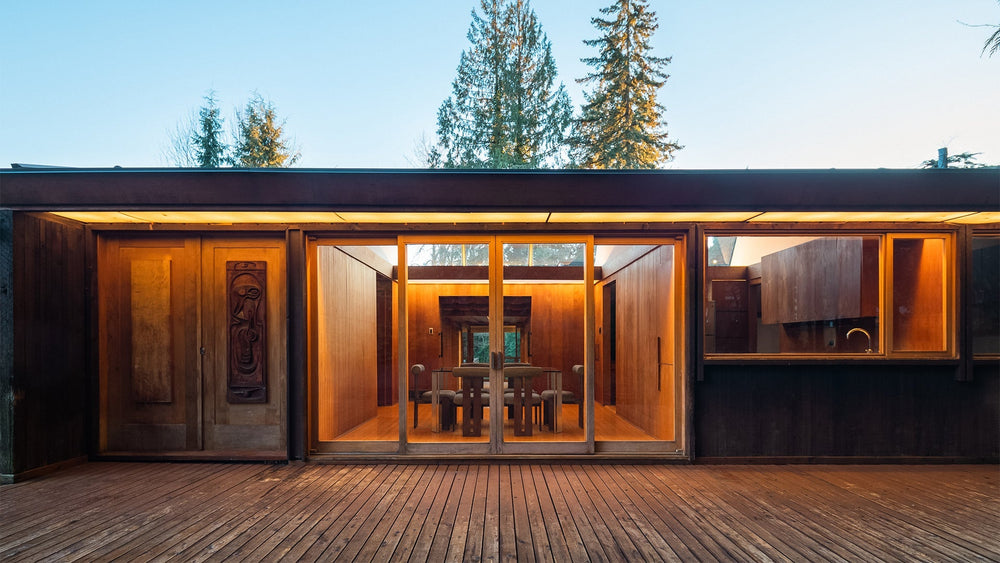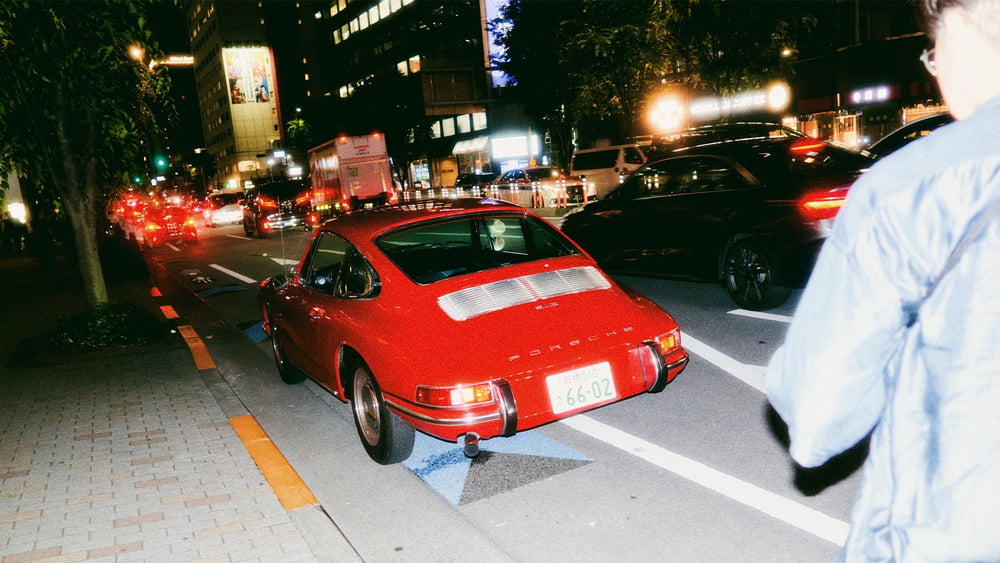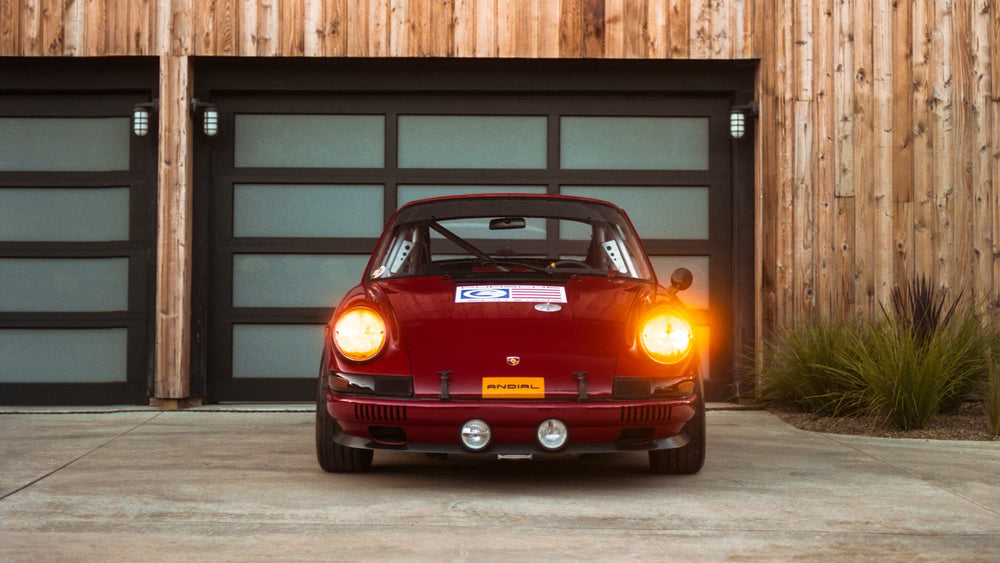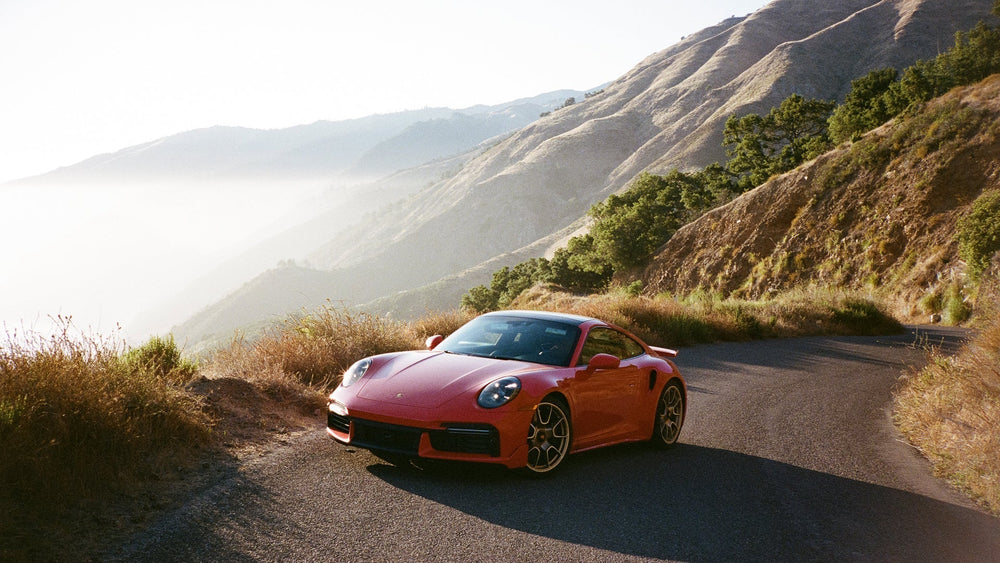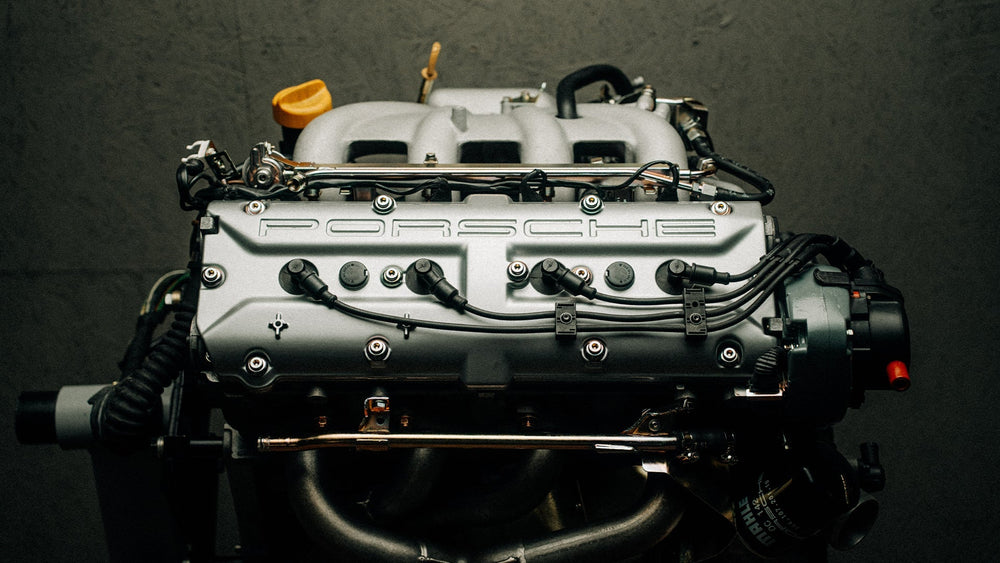A couple of studios are still in use by the other major British channels, but it's safe to say that the heyday of the nearly century-old British Broadcasting Corporation has already come to an end here. One of those apartment owners was waiting for me in the doughnut, as it was once lovingly referred to by former staffers - his tangerine Porsche 356 parked in the circular plaza at the centre of the question mark-shaped landmark. It's rare that a shoot location could take my breath away quite like this, but as a television-addicted youth. it occupies a very special place in my heart.
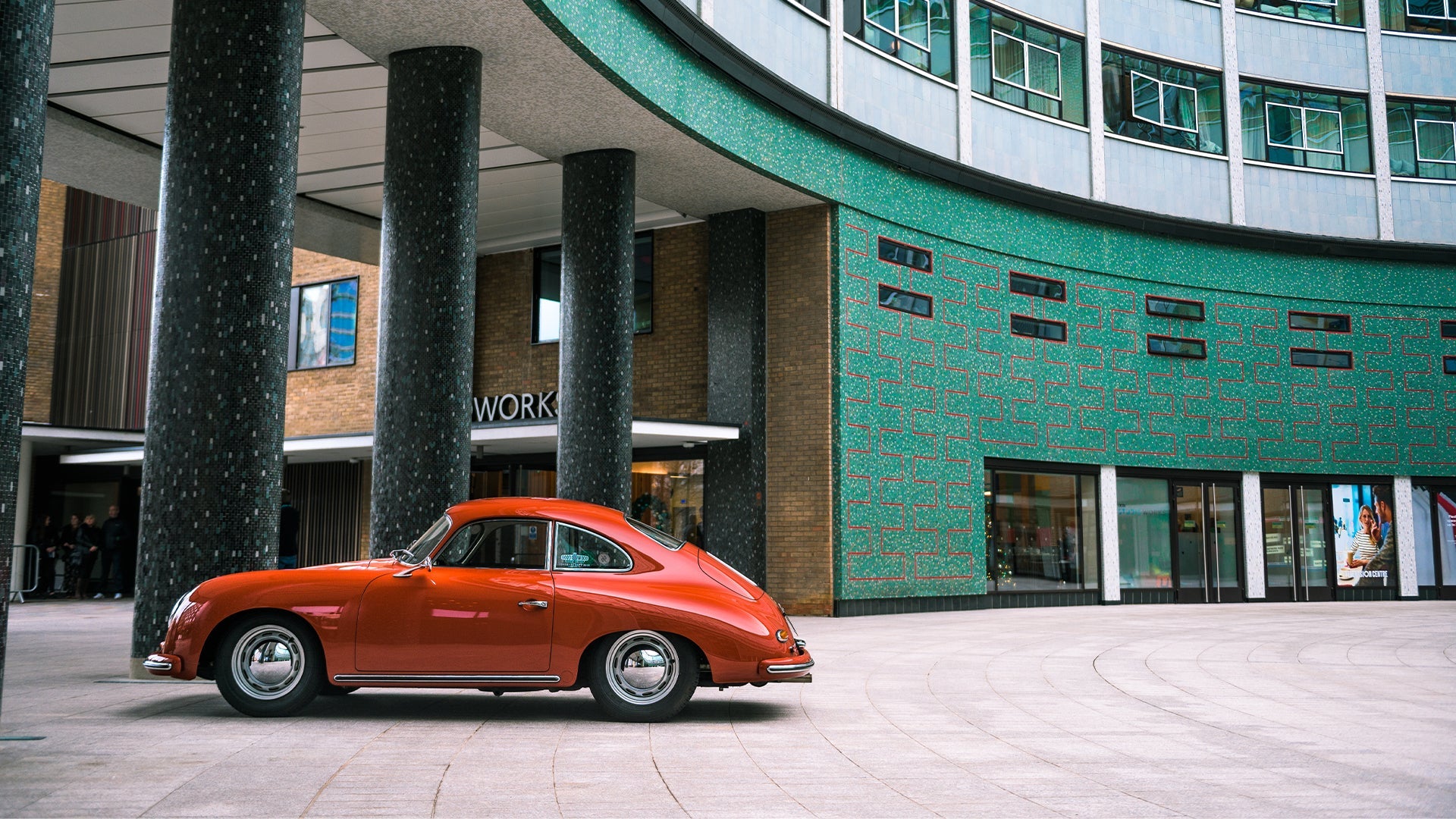
The Porsche 356 that lives at the centre of the universe.
Would-be audience members queued politely at the side as I arrived at the old BBC Television Centre. At the front of the building, a morning TV show set was being dressed with artificial snow in the final moments before going live, as a countdown to Christmas began. Almost every culturally important British television moment was either conceived or filmed on this plot in London. That showbiz history is still palpable, even though in 2013 the BBC officially moved headquarters to a newer, larger complex, and many of the old offices were converted to luxury apartments.
